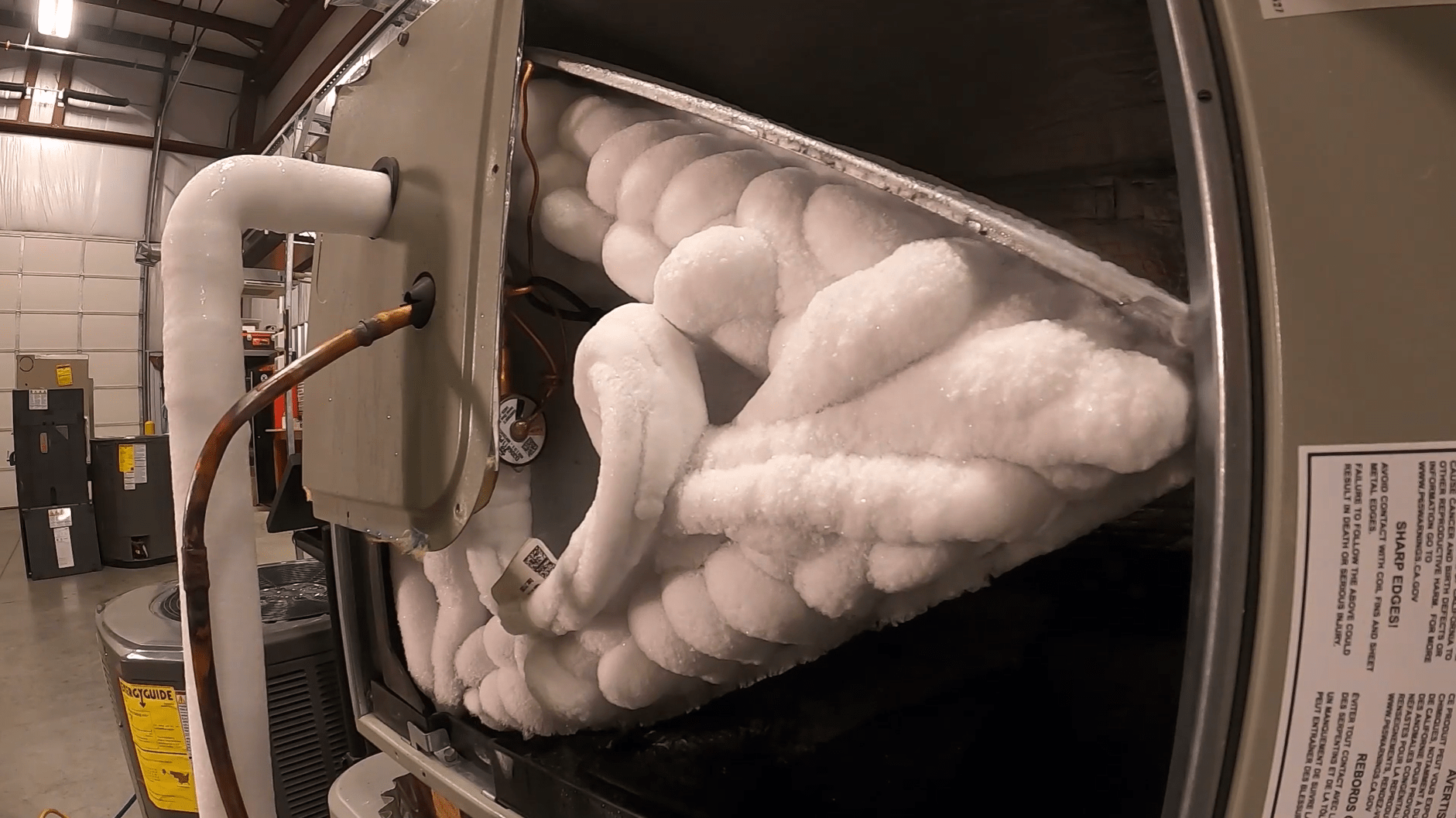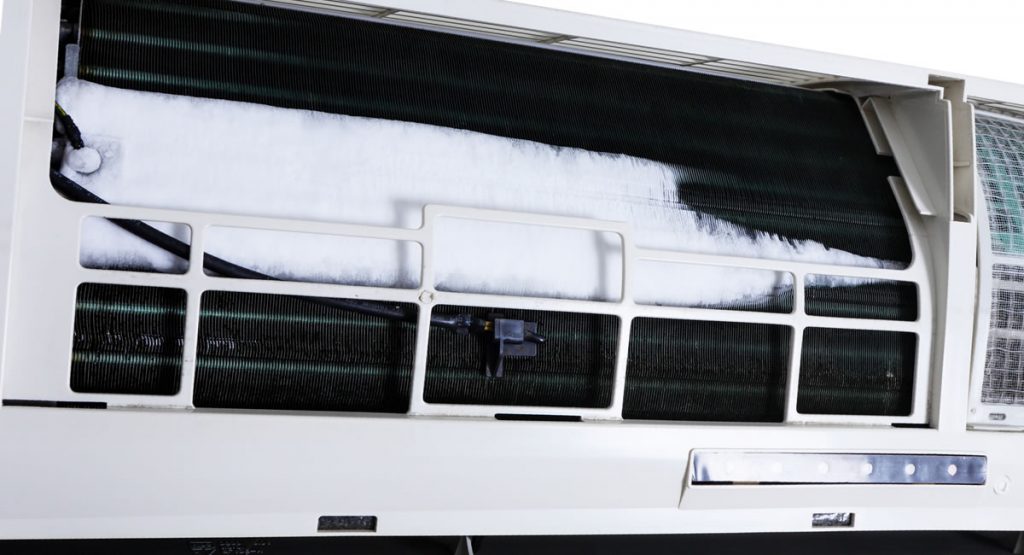Handling a Frozen AC Pipe: Successful Methods
Handling a Frozen AC Pipe: Successful Methods
Blog Article
We have stumbled on the article about Why Is Ice On My Outside Air Conditione below on the internet and thought it made sense to talk about it with you in this article.

Introduction
Discovering that your AC pipe is frozen can be concerning, especially throughout warm summertime when you count on your air conditioner the most. Recognizing what to do in such a scenario is vital to avoid further damage to your air conditioning system and guarantee your convenience inside your home.
Comprehending the Causes
A number of factors can add to the freezing of an a/c pipe. Comprehending these reasons can help you deal with the problem properly.
Absence of Airflow
One typical reason for a frozen air conditioner pipe is inadequate air movement. When the airflow over the evaporator coil is limited, it can create the coil to drop below freezing temperature level, resulting in ice development on the pipeline.
Low Refrigerant Levels
Inadequate cooling agent levels in your air conditioner system can also lead to an icy pipe. Low cooling agent degrees can create the pressure in the system to drop, resulting in the cold of dampness on the evaporator coil.
Cold Weather Conditions
In chillier environments, freezing temperature levels outside can add to the cold of air conditioner pipelines. If your AC unit is not correctly insulated or if there are leakages in the ductwork, chilly air can infiltrate the system, triggering the pipe to freeze.
Dirty Air Filters
Dirty or clogged air filters can restrict air movement in your air conditioner system, bring about numerous concerns, consisting of a frozen pipe. It's necessary to replace or cleanse your air filterings system consistently to make sure appropriate airflow and prevent ice build-up.
Indications of a Frozen AC Pipe
Identifying the indications of an icy a/c pipe is vital for prompt activity.
Minimized Airflow
If you notice a considerable decrease in air flow from your vents, it can show an icy pipe.
Ice Buildup on the Pipe
Visible ice buildup on the refrigerant line or the evaporator coil is a clear indicator of a frozen air conditioner pipe.
Weird Sounds from the Unit
Uncommon sounds, such as hissing or gurgling, coming from your AC device can signal that there's ice existing on the pipe.
Immediate Actions to Take
When confronted with a frozen air conditioner pipe, it's essential to act swiftly to prevent additional damages to your cooling system.
Switching off the a/c
The initial step is to switch off your air conditioner to avoid the system from running and aggravating the issue.
Checking for Blockages
Check the location around the interior unit for any type of blockages that might be obstructing air movement, such as furnishings or drapes.
Thawing the Pipe
You can use gentle techniques like putting towels taken in cozy water around the frozen pipe to assist thaw it slowly.
Preventive Measures
Taking preventive measures can help stay clear of future incidents of a frozen air conditioner pipe.
When DIY Methods Fail
If your efforts to thaw the pipe or address various other problems are not successful, it's time to employ a professional.
Relevance of Hiring a Professional HVAC Technician
A certified HVAC professional has the expertise and tools required to diagnose and repair problems with your air conditioner system securely and properly.
Routine Maintenance Checks
Schedule regular maintenance checks with a specialist HVAC technician to ensure that your a/c system is running effectively.
Transforming Air Filters
On a regular basis change or cleanse your air filters to avoid air flow constraints and maintain optimal performance.
Shielding Exposed Pipes
If your AC pipelines are subjected to cold temperatures, consider shielding them to prevent freezing throughout winter months.
Looking For Professional Help
If DIY methods stop working to fix the problem or if you're unsure regarding how to continue, it's finest to look for support from a qualified HVAC professional.
Conclusion
Handling a frozen air conditioner pipeline can be an irritating experience, however knowing exactly how to respond can aid reduce damages and recover convenience to your home. By recognizing the reasons, acknowledging the indicators, and taking prompt activity, you can efficiently address the concern and avoid future events.
What to Do If Your AC Line Is Frozen
Make Sure All Supply and Return Air Vents Are Open
If you notice problems with airflow, the first thing you should do is check your supply and return vents. Supply vents distribute clean, conditioned air throughout your home. As this air becomes stale, it’s pulled into the return vent, where it’s reconditioned before being sent back out through the supply vent.
When these vents are closed, air won’t flow in the home. Before examining your AC, check the vents in every room and ensure they’re all open.
Check for a Dirty Air Filter
Another possible cause of limited airflow is a dirty air filter. Your air conditioner’s filters catch elements you don’t want to breathe in, such as dirt and dust. Over time, filters can become clogged, ultimately blocking air from flowing in and out. The lack of airflow can then cause the entire coil to freeze and will completely restrict any air from moving through it. The AC may need to be powered off for one to two days to allow the coil to thaw after replacing the filter to allow proper functioning of the unit. This debris can also accumulate on your AC’s evaporator coil, requiring a more serious repair. In general, air filters should be cleaned regularly (about every two weeks).
Assess Your Outdoor Unit
In addition to checking your AC, assessing the outdoor unit is a good idea. Also known as the condensing unit, it works with your interior unit to release heat outside. An issue with the outdoor unit can result in rising internal temperatures.
Overgrown Shrubs or Clogged Leaves
From leaves and twigs to shrubs and debris, there’s no shortage of outdoor elements that can accumulate around your condensing unit. When these elements get lodged inside the unit, they can block airflow. Fortunately, removing the blockage can solve the problem.
Sounds of a Broken Fan
Shrubs and leaves aren’t the only things that can impede your outdoor unit’s airflow. If the fan is broken, the unit won’t be able to properly get rid of heat — which means the internal temperature won’t go down. First, make sure the fan is spinning. If it is, check for the following sounds of a broken fan:
Buzzing Rattling Screeching Hissing Clicking Preventative Measures
Nobody wants to deal with a frozen AC line. In addition to causing problems with your air conditioner, they require professional repairs. On the bright side, there are preventative measures you can take to help ensure this issue doesn’t arise in the first place.
https://www.coopergreenteam.com/blog/what-to-do-if-ac-line-frozen

Do you like reading about Have a Frozen AC Line? Here’s How to Fix It? Try to leave a remark below. We would be glad to know your insights about this entry. We hope to see you back again soon. Loved our piece? Please share it. Help someone else discover it. Many thanks for your time. Visit us again soon.
Contact Report this page